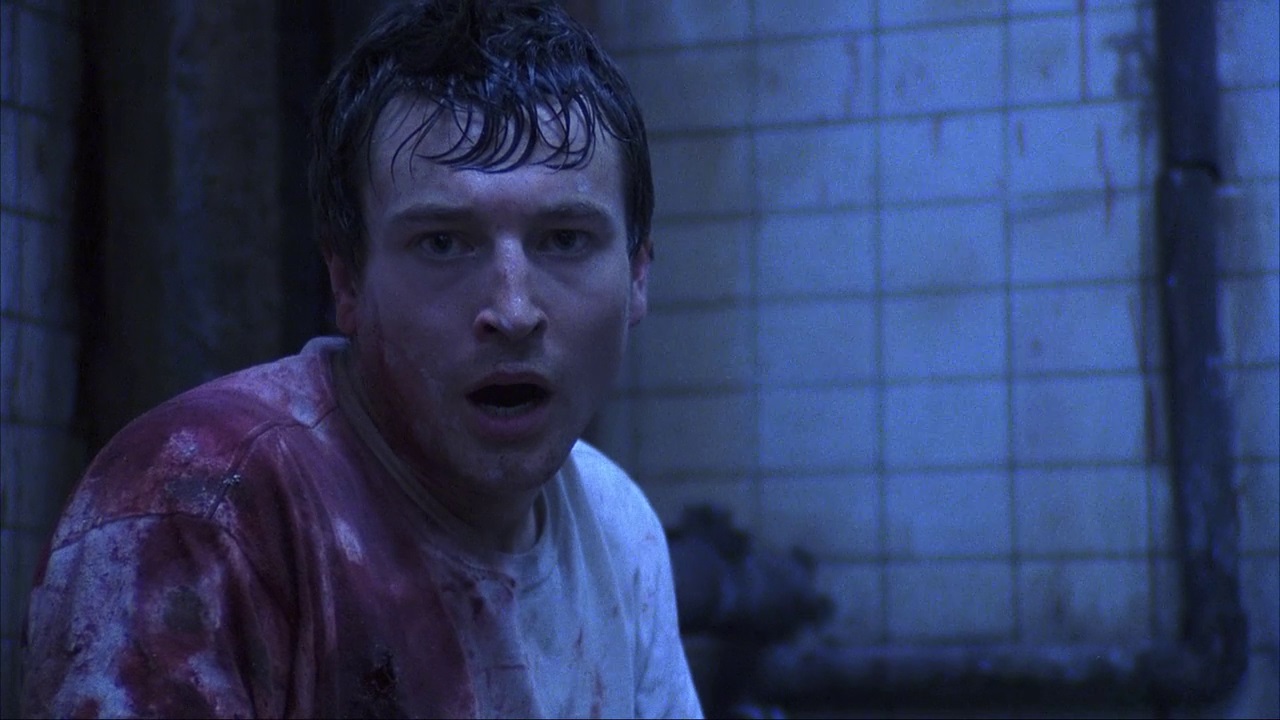Warning: this article contains spoilers for the Saw franchise, up to and including Saw: The Final Chapter.
First things first: don’t get me wrong here. Saw is one of my favourite films. It was one of the first horror movies my big brothers showed me, and as such it has a very special place in my heart. When Tobin Bell stands up at the end, the music kicks in and the twist-explaining montage kicks off, I still get major goosebumps.
However, I re-watched the film recently, in preparation for Jigsaw, and something bugged me about it. Cary Elwes’ Dr Lawrence Gordon was given a game with clear rules – kill Leigh Whannell’s Adam before 6 o’clock, and your family will live. If Gordon fails to kill Adam, his family will die and he’ll be left in the bathroom. Simples.
However, Adam is given a much more vague game. Let’s run through the film from Adam’s perspective, and try to decipher whether he actually did anything wrong. Did he actually deserve to be left in the bathroom to die? I’m not so sure…
“Help! Someone help me! Is someone there? Hey! Oh shit, I’m probably dead.”
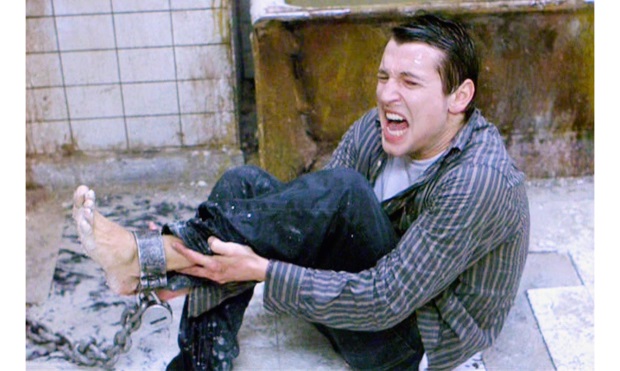
Adam wakes up in a bathtub. He’s totally unaware at this stage that he’s in a game at all. The last thing he remembers is a pig-mask-wearing attacker coming at him in his dingy apartment.
Naturally, Adam scrambles around a bit and gets out of the tub. He accidently pulls the plug out in the process, which turns out to be rather important later on. At this stage, before Adam has heard a single tape from Tobin Bell’s John Kramer (aka The Jigsaw Killer), you can’t really criticise him for breaking the rules, getting it wrong, or squandering his chance.
Adam’s initial reaction, upon realising that he’s chained up in a grimy bathroom, is to cry for help. Again, it’s a highly justifiable move. But Adam soon finds out that only one person can hear him (except for Jigsaw himself, who’s hidden in plain sight on the floor): Doctor Gordon, who’s chained up in a similar manner – sans bath – on the other side of the room.
Searching for a meaning for this, Adam speculates that their kidneys have been removed and put on eBay. Gordon, using his vast medical knowledge, poo-poos this theory. Gordon makes another logical move: to try and open the door, which is within his reach. The door doesn’t budge.
Soon, both captives find their tapes. They borrow a cassette recorder from the ‘corpse’ in the middle of the room. Adam listens to his tape first, hearing this grim message:
“Rise and shine, Adam. You’re probably wondering where you are. I’ll tell you where you might be. You might be in the room that you die in. Up until now, you’ve simply sat in the shadows watching others live out their lives. But what do voyeurs see when they look into the mirror? Now I see you as a strange mix of someone angry, yet apathetic. But mostly just pathetic. So are you going to watch yourself die here today, Adam, or do something about it?”
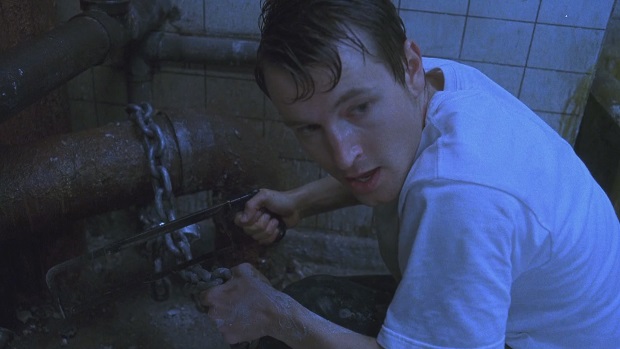
Adam has no clear goal, then. He’s simply given a vague choice between ‘watch yourself die’ or ‘do something about it.’ He’s not told to kill Gordon, find a key, chop his foot off, or anything else at all specific. By comparison, Gordon’s tape message is an awful lot clearer about the aims of the game:
“Dr. Gordon, this is your wake-up call. Everyday of your working life you have given people the news that they’re gonna die soon. Now you will be the cause of death. Your aim in this game is to kill Adam. You have until six on the clock to do it. There’s a man in the room with you. When there’s that much poison in your blood, the only thing left to do – is shoot yourself. There are ways to win this, hidden all around you. Just remember, X marks the spot for the treasure. If you do not kill Adam by six, then Alison and Diana will die, Dr. Gordon… and I’ll leave you in this room to rot. Let the game begin.”
The received wisdom about Jigsaw, which this movie and all the others spell out, is that he isn’t a murderer. He just puts people in situations where they might die, unless they learn his lesson and win whatever game they’re put in. But in this game, only Lawrence is given a way to win: kill Adam, and your family survives, and you won’t be left in a bathroom to die.
Adam, on the other hand, is just encouraged to ‘do something’. And, to be fair, he does quite a few things: he fesses up about the fact that he was spying on Gordon before the game began; he works with Gordon to find clues; he locates the hacksaws, and tries to cut through the chains; he colludes with Gordon and comes up with a sneaky plan to play dead and cheat the game (which doesn’t work, because he gets electrocuted by the chain); and, perhaps most impressively, he stays alive past six o’clock…
“Look… we’re out of time!”
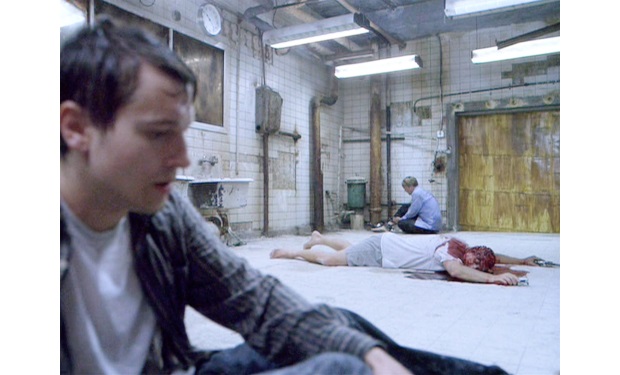
Gordon loses his game. The clock strikes six, and Adam is still alive. Michael Emerson’s Zep, who has been monitoring the bathroom situation remotely (as part of his own game), begins trying to kill Gordon’s family. Luckily, they put up a fight, and Danny Glover’s troubled former detective David Tapp shows up and chases Zep from the scene.
Zep heads for the bathroom, and gets caught up in a rather lo-fi car chase with Tapp. Meanwhile, Gordon, who heard some of the commotion at his house down a phone line, gets rather worked up. He yells “FUCK THIS SHIT”, cuts his own foot off with the hacksaw provided, takes the gun from the hand of the ‘corpse’ in the middle of the room, puts a single bullet it in it, and shoots Adam.
Zep shows up, opens the door, and gives Adam’s body a kick. He believes that Adam has died, but declares that Gordon was too late in doing the deed. “It’s the rules”, Zep states, and he’s absolutely right there. By the crooked logic of Jigsaw’s game, Lawrence should be left in the bathroom to rot – and his family should die. He failed to win the game, and that is the price for losing.
But Adam isn’t actually dead! He survived Gordon’s gunshot, and now he’s getting up off the floor and walloping Zep with the toilet tank cover. Adam took a bullet, but still stepped up to kill Zep and save Gordon. Much like Gordon was asked to do, he’s taken one life to save someone else. Jigsaw could hardly argue that he didn’t ‘do something’.
“I have to go and get help”
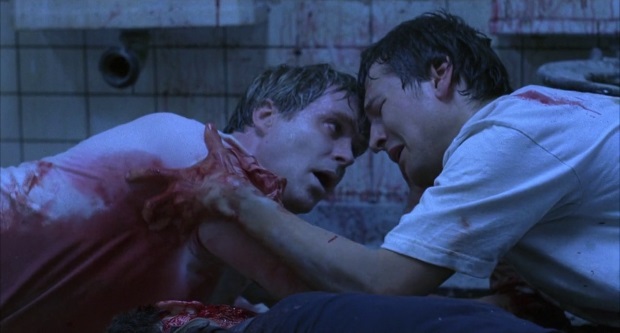
Gordon assures Adam that he will survive his bullet wound. Gordon crawls out of the bathroom to go find help. Years later, in Saw: The Final Chapter (aka Saw 3D), we learned that Gordon made it as far as a steaming pipe in the corridor outside the bathroom. He used the hot metal to cauterise his stump, and passed out from the pain of doing so. He didn’t find help and he didn’t go back for Adam, despite saying that he would.
Meanwhile, Adam searches Zep’s body and finds his tape, learning that Zep was just another pawn in Jigsaw’s game. Zep’s own game was to kill Gordon’s wife and child, if Gordon lost the main game. As a reward for success, Jigsaw would have given Zep the antidote to the slow-acting poison coursing through his veins. It’s a game not unlike Gordon’s one: kill whoever Jigsaw tells you to, and you’ll get to live.
Again, it’s easy to feel like Adam got short shrift here. He survived everything that was thrown at him: he found clues, he took a bullet, he was still breathing when the clock struck six, and he took Zep’s life to save Gordon. The only thing Adam didn’t do was chop off his own foot (or mash it to pieces with something heavy, which is established as a viable method in Saw III – thanks, Donnie Wahlberg).
Is that what Jigsaw wanted? Would he have let Adam crawl away and live on if he had done a bit of self-dismembering? But what if Adam had chopped his foot off before six o’clock? Would Adam have been allowed to leave before Gordon’s game was completed?
You’ve got to question Jigsaw’s skills as a taskmaster. Greg Davies and Alex Horne wouldn’t be impressed with the lacklustre game he gave to Adam: there’s no clear goal, no time limit, and you get locked in a bathroom to die if you don’t somehow ‘win’ before Jigsaw gets bored and stands up.
Let’s think about Jigsaw’s questionable moral compass for a minute, as well: the latter films portray John as a sort of social justice warrior, reeling from the death of his unborn child and trying to improve society’s shittiest people with grim games. But that really doesn’t seem in step with all this ‘kill this person because I told you to’ business from the original Saw. In order to ‘win’ and survive, both Gordon and Zep are tasked with killing relatively innocent people: Adam is a snoop, but that hardly deserves a death sentence; and, as far as we know, Gordon’s wife and kid have never said boo to a goose.
The more you look at this film, the more it feels like Jigsaw is happy to let random people die if it means testing other people. That same mantra seems to apply in the game given to Shawnee Smith’s Amanda: she has to dig out the key within her ‘dead cellmate’ before the reverse bear-trap rips her head to pieces. Except the cellmate isn’t actually dead, and he opens his eyes just as Amanda cuts in him. Dick move, Jiggy.
“The key to that chain is in the bathtub.”
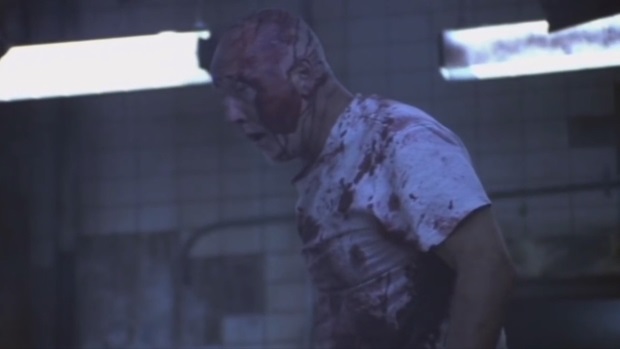
Speaking of dick moves, before declaring ‘game over’ and leaving Adam to die, Jigsaw reveals a salient piece of information: “the key to that chain is in the bathtub.” Except, it isn’t. The key is not there anymore, because Adam accidentally pulled the plug when he woke up in the tub, and the key went down the drain – never to be seen again.
What exactly was the point of putting the key in the bath with Adam? If Adam had woken up without so much writhing and inadvertent plug-pulling, he might have found the key floating in the water. He could’ve undone his shackle and wandered the bathroom freely. The main door seemed pretty locked when Gordon tried to open it, but perhaps Adam could’ve found a way to jimmy it open with a bit more freedom of movement.
What would that have achieved? Adam pulling the plug and losing the key plays quite nicely on first viewing, folding into the massive montage of twists and flashbacks. But, on closer inspection, you’ve got to question why Jigsaw wanted to leave a key in the room at all. Isn’t the point that they have to chop or mangle a foot, give their pound of flesh, appreciate life and win Jigsaw’s favour? If he’d found the key at the beginning, it’s doubtful that Adam would’ve learned anything.
So, Adam’s game had no clear goal, but he was given a key to his shackle right from the start. He just had literally no way of knowing to look for it, though, making Jigsaw look like an unfair taskmaster once again. Tsk.
The Amanda Retcon

In Saw III, flashbacks showed us that Amanda helped Jigsaw set up this game. She captured Adam, brought him to the bathroom, put him in the bath and chucked the key onto his chest. That moment – the key throw – is glimpsed in a montage. That montage is basically about Amanda being a bad apprentice to Jigsaw: she puts people in traps they can’t survive, instead of giving them a way to learn a lesson and escape.
By including Amanda’s placement of the key in that particular montage, the filmmakers seem to be suggesting that Amanda wasn’t supposed to do that. In placing the key loose in the water, she consigned Adam to a game he couldn’t win. Of course he would lose the key as soon as he woke up, leaving Adam with no blood-free way of escaping. (But Saw isn’t about blood-free ways of escaping, is it?)
If you squint, the ‘Amanda helped set up Adam’s game, and therefore it’s rigged against him’ retcon just about makes sense. Most casual viewers had probably forgotten the exact specifics of Adam’s trap by the time Saw III came out, anyway, and few hangers-on might’ve been placated by these flashbacks. But, for a pedant like me, this attempt at explaining Adam’s game just adds more questions to the ever-growing pile.
Where was Amanda meant to put the key, if she wasn’t meant to put it in the water? And if Amanda wasn’t meant to put the key in the water, why did Jigsaw let her do that? He’s clearly aware of the key’s placement when he gets up off the ground at the end of Saw. To my (possibly paranoid) ear, there’s even a gloaty ‘you could’ve got out!’ tone to Jigsaw’s voice as he tells Adam where key was.
Ah, God, it still doesn’t make sense. Gahhhhhhh!
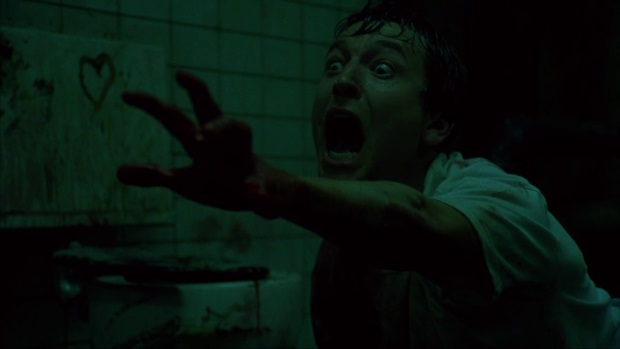
Whether or not the key was supposed to be in the bathtub, Adam was still given a naff game from Jigsaw: he was told to ‘do something’ or die in a mucky toilet. He did plenty of things, but none of them involved chopping off his foot. So, even though he never made it clear that foot-chopping was the one ‘something’ he was exclusively looking for, John Kramer left Adam to rot.
In another Saw III flashback, Amanda goes back in after this ‘game over’ moment and suffocates Adam with a plastic bag. She puts him out of his misery, killing him quickly instead of letting him starve to death. Adam is definitely dead, then, and his rotting corpse had plenty of cameos in the later films. (What fun!)
You’ve got to feel sorry for Adam. He never stood a chance, really. His game was never properly explained. He survived past six o’clock, did a lot of things, and overcame plenty of obstacles, but Adam still got left in the bathroom.
I’ve always loved the Saw films and I’ll be first in line for Jigsaw next month, but Adam’s poorly explained game remains infuriatingly hard to make sense of. It’s either a plothole born of bad writing, or Adam’s test was deliberately written as vague and nigh on impossible. (I’d still love to know what Jigsaw would’ve done if Adam chopped his foot off before six.)
On the other hand, Doctor Gordon technically lost his game: he failed to kill Adam before six, which should mean he’s left to rot and his family gets killed. But instead he was rewarded by Jigsaw. John allowed Gordon to live, fitted him with a prosthetic foot, and brought him into the inner sanctum of Team Jigsaw. I think all I’ve learned from this is that dismemberment is more important to Jigsaw than whether or not you actually win his game.
If you’ve got a better reading of Adam’s game, which makes a bit more sense, please god put it in the comments below. It might help me sleep a bit better…

